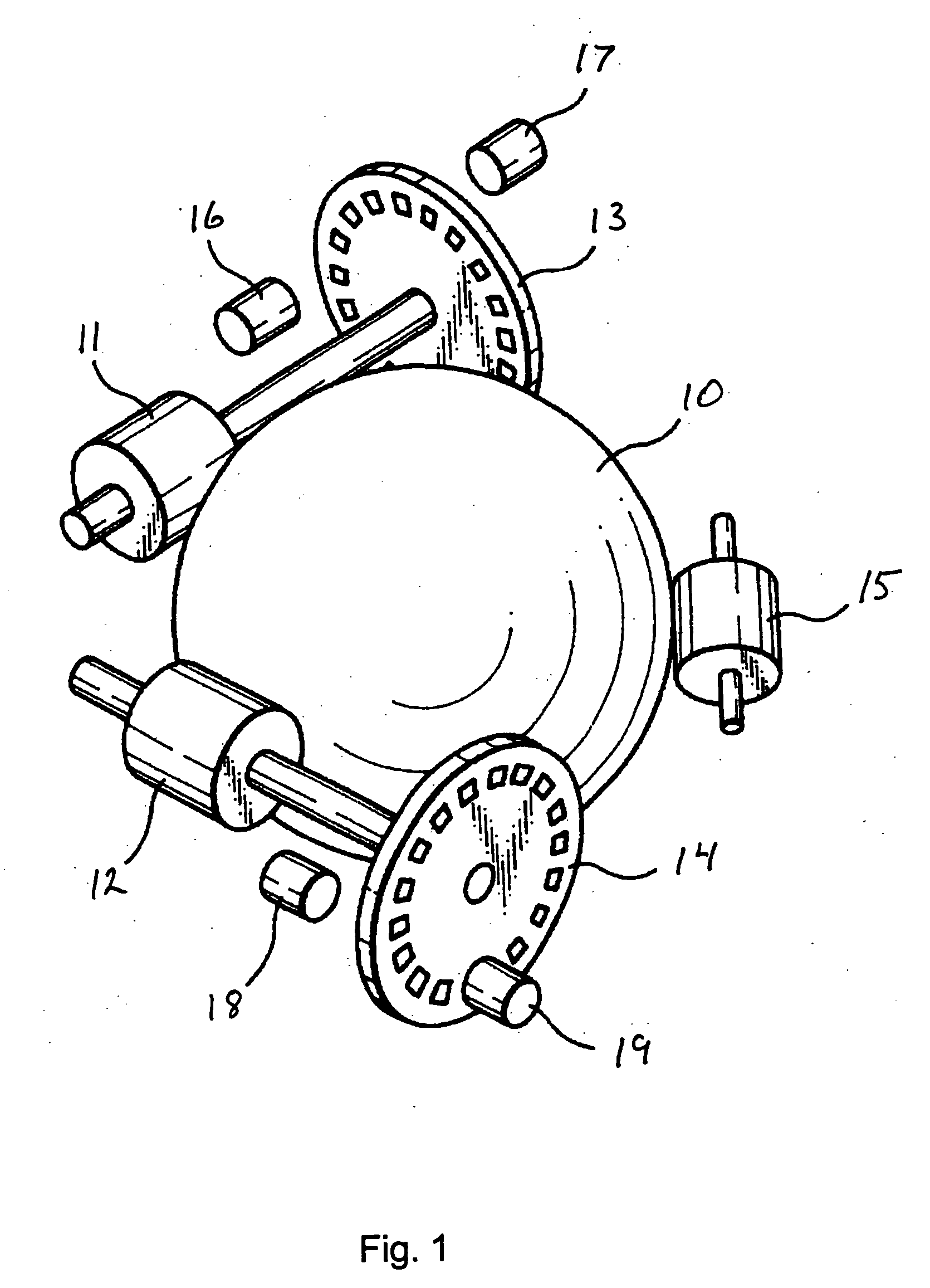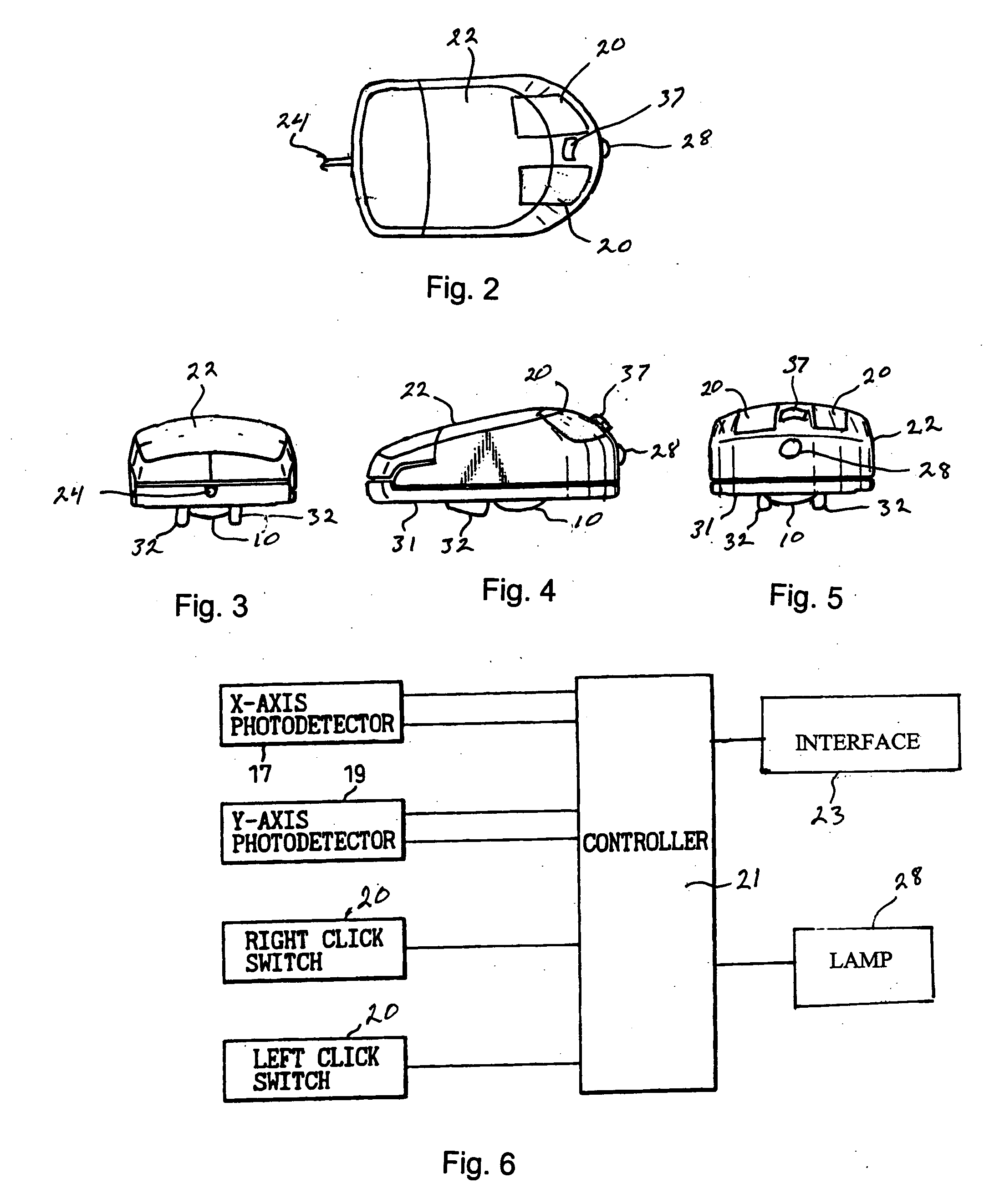Method and apparatus for detection and measurement of scoliosis of the spine
a technology of scoliosis and measurement method, which is applied in the field of methods and apparatus for detection and measurement of scoliosis of the spine, can solve the problems of poor cosmetic appearance, severe impact on the ability of a person's normal function, and no systematic method of noting the change in spine development, etc., and achieves direct and accurate measurement of a person's spine, convenient use, and convenient use
- Summary
- Abstract
- Description
- Claims
- Application Information
AI Technical Summary
Benefits of technology
Problems solved by technology
Method used
Image
Examples
Embodiment Construction
[0035] The present invention makes use of the structure and operation of the common computer mouse to obtain a continuous measurement of the human spine.
[0036] Computer mice are commonly used pointing devices for personal computers (PCs) and are designed to inform PCs of movements in the X and Y coordinates and to initiate operations of computer software in response to activation of click switches provided on the outside of the mouse casing.
[0037]FIG. 1 shows the principle of a conventional mouse which is used in the present invention. A ball 10 turns in response to user's manipulation. The ball 10 is in contact with an X-axis roller 11 and a Y-axis roller 12 that are orthogonal to each other. The rollers 11 and 12 have disks 13 and 14, respectively. The disks 13 and 14 have slits formed at regular intervals and turn in respond to the rotation of the ball 10. A presser roller 15 is arranged at an angle of 45 degrees with respect to the rollers 11 and 12 to keep the ball 10 and rol...
PUM
 Login to View More
Login to View More Abstract
Description
Claims
Application Information
 Login to View More
Login to View More - R&D
- Intellectual Property
- Life Sciences
- Materials
- Tech Scout
- Unparalleled Data Quality
- Higher Quality Content
- 60% Fewer Hallucinations
Browse by: Latest US Patents, China's latest patents, Technical Efficacy Thesaurus, Application Domain, Technology Topic, Popular Technical Reports.
© 2025 PatSnap. All rights reserved.Legal|Privacy policy|Modern Slavery Act Transparency Statement|Sitemap|About US| Contact US: help@patsnap.com



